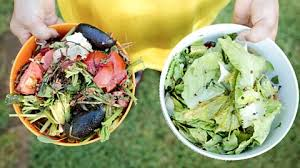
Table of Contents
The waste food upcycled into new products
### Understanding Waste and Upcycling In developed countries, significant waste happens at the consumer level, whereas in developing countries, much of the waste occurs during production and transportation due to inadequate infrastructure. food
### Examples of Upcycled Food Products 1. **Fruit Peels and Pulp**: Fruit juices and smoothies often leave behind a significant amount of pulp and peels. Companies are now transforming these by-products into a range of products, from snacks to dietary supplements. For example, orange peels can be converted into candied snacks or essential oils, while apple pulp can be used to make fruit bars or jams. 2. **Spent Grain**: The brewing industry generates tons of spent grain, which is often discarded. However, this by-product is rich in fiber and protein, making it an excellent ingredient for baking. Breweries are partnering with bakeries to create products like bread, crackers, and even dog treats. 3. **Vegetable Scraps**: The remnants from vegetable processing, such as carrot tops or beet greens, are being repurposed into pestos, sauces, and even chips. Companies are finding ways to incorporate these nutritious scraps into their product lines, reducing waste and offering unique flavors. 4. **Whey from Cheese Production**: Whey is a by-product of cheese-making and is often wasted. However, it is rich in protein and can be used to produce protein powders, beverages, and even skincare products. This not only utilizes a valuable resource but also provides consumers with high-protein options. 5. **Stale Bread**: Bread is one of the most wasted items. Innovative companies are collecting unsold bread from bakeries and transforming it into products like breadcrumbs, croutons, and even beer. This helps reduce waste and creates a circular economy within the food industry.
### Benefits of Upcycling Waste 1. **Environmental Impact**: waste is a significant contributor to greenhouse gas emissions. Upcycling helps divert waste from landfills, reducing emissions and conserving resources used in food production. 2. **Economic Opportunities**: Upcycling creates new markets and business opportunities. Entrepreneurs can develop innovative products from waste, driving economic growth and creating jobs. Additionally, businesses can save money by reducing waste disposal costs and potentially earning revenue from by-products. 3. ** Security**: By maximizing the use of available resources, upcycling contributes to security. It helps ensure that more of the produced is utilized, reducing the need for additional production and the strain on agricultural systems. 4. **Consumer Awareness and Demand**: As consumers become more environmentally conscious, there is a growing demand for sustainable products. Upcycled food products cater to this market, offering eco-friendly options and educating consumers about the importance of reducing waste.
### Challenges and Solutions 1. **Logistics and Supply Chain**: Collecting and transporting food waste for upcycling can be logistically challenging. Establishing efficient collection systems and partnerships between food producers, processors, and upcycling businesses is crucial. Investments in infrastructure and technology can streamline these processes. 2. **Regulatory Hurdles**: Navigating food safety regulations and ensuring the quality of upcycled products can be complex. Collaboration with regulatory bodies to develop clear guidelines and standards for upcycled foods is essential. Ensuring transparency and safety in the production process builds consumer trust. 3. **Consumer Perception**: There can be a stigma attached to products made from food waste. Effective marketing and education campaigns are needed to shift consumer perception and highlight the benefits and quality of upcycled products. Showcasing success stories and endorsements from trusted sources can help change attitudes. 4. **Innovation and Investment**: Continuous innovation is required to develop new upcycled products and improve existing ones. Encouraging investment in research and development can drive innovation. Governments and private sector entities can provide funding and support to startups and businesses focusing on upcycling.
### Successful Upcycling Initiatives 1. **Rubies in the Rubble**: This UK-based company creates condiments like ketchup, chutneys, and mayonnaise from surplus produce. By rescuing aesthetically imperfect fruits and vegetables that would otherwise go to waste, they create delicious products while reducing food waste. 2. **Toast Ale**: This brewery uses surplus bread to brew beer, addressing the significant issue of bread waste. They work with bakeries to collect unsold bread, which is then used in the brewing process. Toast Ale also donates a portion of its profits to food waste charities. 3. **Barnana**: Specializing in upcycled banana snacks, Barnana uses bananas that are too ripe or imperfect for retail sale. These bananas are transformed into dehydrated banana bites, chips, and other snacks, helping reduce waste in the banana industry. 4. **ReGrained**: This company upcycles spent grain from breweries into nutritious snack bars and baking mixes. By partnering with local breweries, ReGrained transforms a common by-product into a valuable ingredient, promoting sustainability in the food and beverage industry. 5. **Renewal Mill**: Focusing on upcycling by-products from food production, Renewal Mill creates flours and baking mixes from ingredients like okara (soy pulp) and other plant-based by-products. Their products are rich in fiber and protein, offering nutritious options while reducing waste.
### The Future of Upcycled The upcycling movement is gaining momentum, driven by growing awareness of food waste and sustainability. As technology advances and consumer demand for sustainable products increases, the potential for upcycled food products continues to expand. Collaboration between businesses, governments, and consumers is essential to scale up these efforts and create a more sustainable food system.
### Conclusion The upcycling of waste into new products is a promising solution to the global food waste crisis. By transforming by-products and surplus food into high-quality products, we can reduce waste, create economic opportunities, and promote sustainability. The success of upcycling initiatives hinges on innovation, investment, and collaboration across the supply chain. As we continue to explore the potential of upcycled food, we move closer to a future where food waste is minimized, and resources are maximized, benefiting both people and the planet. indianfastearning.com








